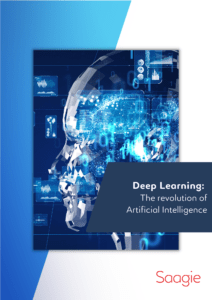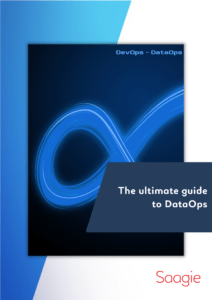Artificial Intelligence, Analytics, Machine Learning… these words are on every lip – every day, tens of articles on these topics are published on the web. Most leaders know that business must become more analytics-driven. Not only to embrace the new digital era, but also to make more educated decisions. Nevertheless, most organisations struggle to deliver this promised value. A recent McKinsey article highlighted ten common issues that are likely to hold back organisations from becoming analytics-driven. By being aware of these issues and addressing them as early as possible, you can help your organisation get a second chance to deliver analytics initiatives successfully and get a better return on your investments.
The Importance of the Organizational Pattern
Big organisations usually have complex structures that generate dynamic networks of interactions and relationships. These tend to impact product or service quality, most of the time negatively. Individual and collective behavior mutate and self-organize to respond to changes inside or outside of the organisation.
Organisations are not simple static aggregations of individual cells or entities. They are alive, sensitive and responsive, much alike human beings.
Adopting an adequate organizational model plays a crucial role in delivering high-quality products and services to your markets. Choosing one type of organizational model – centralized, decentralized or hybrid – will have different consequences in your company. Of course, nothing is permanent and the degree of centralization may change over time.
As advised in the article by McKinsey, at first, it might be appropriate to start with a centralized capability in advanced analytics with a dedicated team to monitor the first created outputs. But over time, as the business becomes more experienced, it may be possible to grant them more autonomy and to keep the role of facilitator.
The 2 Major Organizational Patterns
In recent years, we have observed two organizational patterns that are often encountered in big companies and prevent them from creating value through analytics.
The Ivory Tower
The term « Ivory Tower » comes from the Biblical Song of Solomon. From the 19th century, it has been used to « designate an environment of intellectual pursuit disconnected from the practical concerns of everyday life. »
In organisations, it refers to centralized teams (data scientists), disconnected from operational activities because they spend their time in intellectual pursuits more than solving operational issues. The teams are often composed of highly skilled people but isolated from others: business, IT teams or end-users. As a result, it usually leads to a lack of business buy-in and does not promote collaboration spirit. Data scientist’s work has little or no impact and the business keeps doing what it has been doing.
The Game of Thrones
The Game of Thrones is the first novel in “A Song of Ice and Fire”, a series of fantasy novels written by American author George R. R. Martin. A common theme in the fantasy genre is the battle between good and evil does not mirror the real world.
In an organizational context, the pattern “The Game of Thrones” refers to an environment where different teams “fight” against each other by defending their territory rather than collaborating together.
Data engineer, Data scientist, IT, Business and other tech experts all have a limited scope and responsibilities but there is no collective ownership of the final result.
The transition between key actors is abrupt :
- Business units struggle to embed the models delivered by data scientists into operational processes
- Going into production seems like a Herculean task
- IT does not know what to do with the provided code as it has to be rewritten to fit the production constraints
- End-users are not ready to maintain the model as it appears like a “black box”. All that generates tensions that pervade the entire work environment and lead to large-scale waste and slow results, if any results.
The mentioned two organisational patterns lead to big fails in converting analytics investment into scalable and industrialized solutions.
How About Choosing an Alternative Model?
To avoid to fail, it might be preferable to try a hybrid organizational model with small cross-functional teams. It would also be beneficial to grow your ability to act collectively (business, IT & data scientists) across functional or organizational boundaries.
This team will gather all necessary skills, from concept to production, to achieve the product. There are no more silos: everyone works together enabling an optimal communication and has the necessary autonomy to take decisions according to the company’s strategy, and the responsibility to reach its objectives, a key feature of agile teams.
Nonetheless, beyond the chosen organizational structure and depending on the company’s culture, setting up such a team structure may not be easy, especially when it comes to implementing a new communication model between players.
Agile is a mindset, and an agile transformation is a journey that never ends.
Introducing and deploying analytics program is complex topic, which requires a strong data and collaboration culture. Tech, science, business are all good, but all together, they can create outstanding results. So one last word: Don’t give up!









